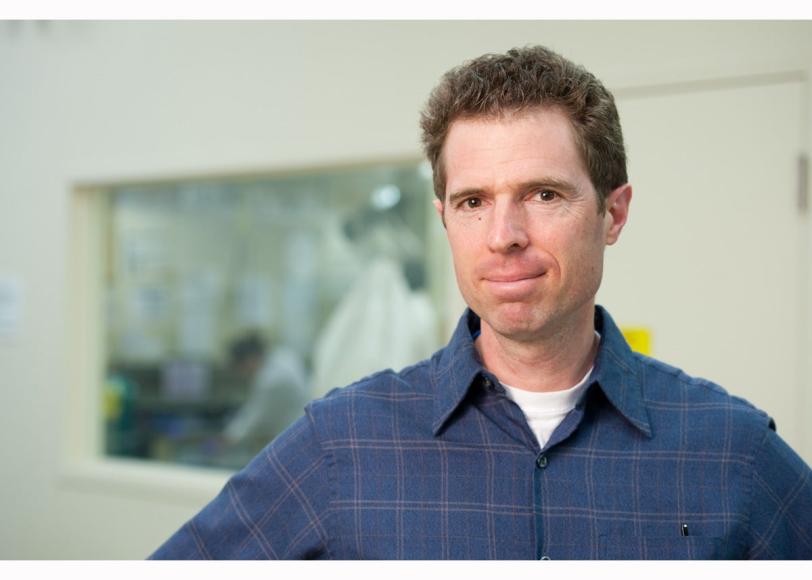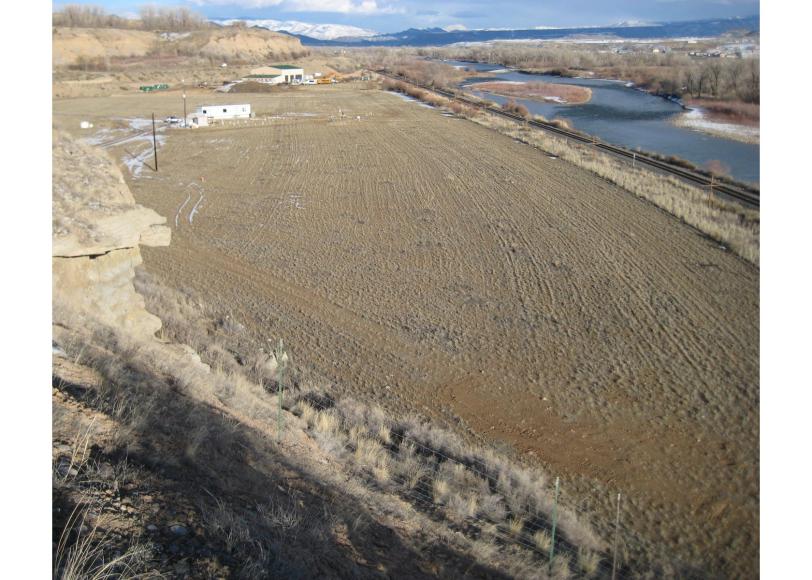SLAC Scientists Study How Nature Cleans Uranium from Colorado Aquifer
Rifle, Colorado, is a small town on the Colorado River, in the heart of the Rocky Mountains, that's big on natural resources.
By Lori Ann White
Rifle, Colorado, is a small town on the Colorado River, in the heart of the Rocky Mountains, that's big on natural resources. It attracts hunters, fishermen, hikers, rock climbers. Its striking scenery attracted husband-and-wife environmental artists Christo and Jeanne-Claude as well; they stretched the Valley Curtain, a 200,200-square-foot orange sheet of nylon, across 1,250-foot-wide Rifle Gap. The curtain lasted only 28 hours before another of the area's natural resources, wind, began to tear it down.
But it's a below-ground natural resource – uranium – that draws John Bargar, head of the Stanford Synchrotron Radiation Lightsource's Molecular Biogeochemical and Interface Sciences group, to the area. "The Old Rifle site" – the focus of Bargar's research – "was a uranium ore processing site in the ‘40s and ‘50s, producing yellowcake," for nuclear fuel, Bargar said.
When the Old Rifle site shut down in 1958, the mill tailings – a crushed rock byproduct of ore processing – were left behind on the north bank of the Colorado River. The tailings still contained "hexavalent" uranium, whose individual atoms had all given up six of their outermost, or valence, electrons. Valence electrons are extremely important in determining how an atom behaves chemically. One behavior of hexavalent uranium is that it dissolves in water, water which then seeps easily through the soil, carrying the uranium with it as a contaminant.
While the orange curtain may be long gone and even the tailings were hauled away in the 1990s, a large amount of uranium that seeped out of the tailings remains as a contaminant in the aquifer and is slowly being released into the Colorado River.
How to reduce the amount of hexavalent uranium in the aquifer or lock it in the sediment in an insoluble, inert form before it even reaches groundwater are big questions for the Department of Energy, which is charged with cleanup of both Rifle sites as well as several others under the Uranium Mill Tailings Remedial Action (UMTRA) Project.
That's where the SLAC Subsurface Biogeochemistry Research Program, headed by Bargar, comes in. Since 2009, the SLAC-based collaboration has been a part of the DOE effort to find an answer to uranium contamination in the environment.
SLAC researchers study how nature itself handles the contamination in the hopes that nature's own tools – both microbiological and chemical – could be used to speed the process. It turns out that naturally existing bacteria can “eat” hexavalent uranium, chemically reducing it to tetravalent uranium, which has gained back two of the missing six valence electrons. Those two regained electrons make tetravalent uranium much less soluble in water, so it doesn't enter groundwater as a contaminant.
Certain minerals containing tetravalent uranium, such as the uranium ore uraninite, are stable in the subsurface – and, considering that life and uranium have co-existed for billions of years, these minerals are pretty safe.
"We wanted to know what chemical and physical form of tetravalent uranium was being made in the aquifer," Bargar said. “For example, is uraninite being created? Or are other less stable molecular forms of tetravalent uranium being created?” A major scientific objective of the program is to create a complete model of the biological and chemical paths taken by uranium in the aquifer, all the way from its initial dangerous, water-soluble form to more stable ones, with all its branches and dead ends, and all its interactions with oxide and sulfide and carbonate species present in aquifers. (Uranium is quite a promiscuous metal.)
To answer these questions, the researchers transformed a piece of river bank into an outdoor laboratory. "We put a bit of the aquifer under control" by suspending columns of native sediment in wells drilled into the alluvial soil of the Old Rifle site, Bargar said. That way, they could adjust conditions in the sediment by, as Bargar put it, "feeding the bugs" – injecting organic carbon substances like vinegar or ethanol as “bug food” to stimulate the growth of naturally occurring bacteria already known to act on uranium.
Then, Bargar and his colleagues brought the samples to SLAC and used SSRL's powerful X-rays to start mapping the paths uranium took.
Bargar has been encouraged by the success of the approach. "It's shed new light on the behavior of tetravalent uranium in aquifers," he said. As might be expected, neither the biological nor the chemical path dominates; both provide complicated intersecting byways that not only transform soluble uranium to a more stable form, but also draw in other substances that prevent the uranium from reverting back to soluble form. There were surprises: the tetravalent uranium doesn't immediately precipitate out as uraninite, but ends up in sulfide-rich coatings on other minerals. Whether the further transformation of tetravalent uranium to uraninite can be – or even should be– speeded up remains to be seen.
While these experiments took place at the Old Rifle site, Bargar emphasizes the general nature of the effort. "This is a model for at large and problematic uranium contamination problems at more than 16 other sites in the Western U.S.," he said – sites where a river flows directly past uranium-contaminated soil. Ultimately, the researchers hope to vastly improve the cleanup of subsurface uranium, and help make all such areas as beautiful below ground as they are above.
The SSRL Environmental Remediation program is a Scientific Focus Area (SFA) study funded by the Department of Energy's Office of Biological and Environmental Research, Climate and Environmental Sciences Division.

(Photo by Matt Beardsley)

(Photo by John Bargar)